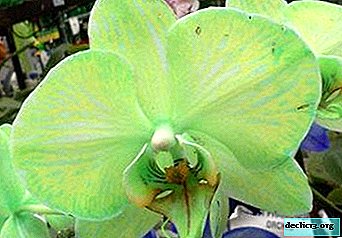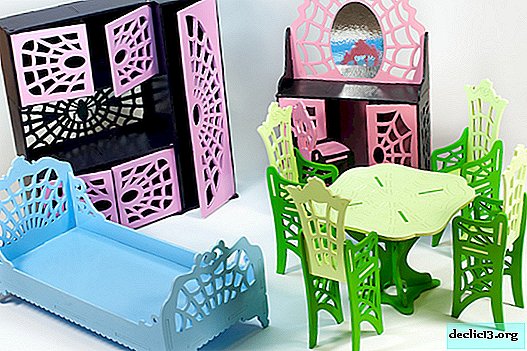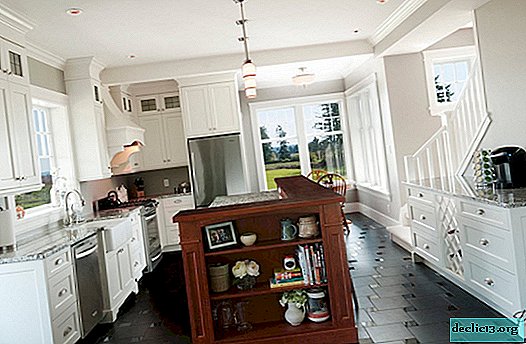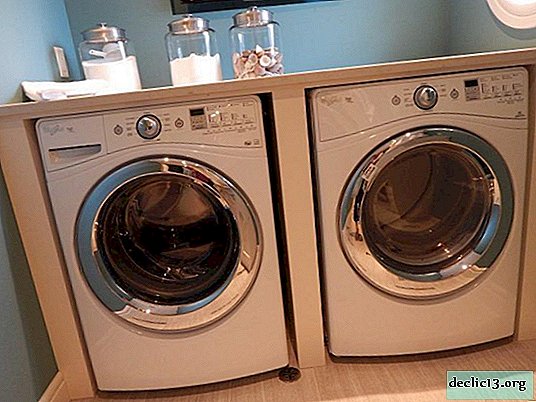Lambrequin in the interior of the hall or living room 2018
Living room - a visiting card of any home. In this room the whole family gathers in the evenings for relaxation and communication, it is here that guests are accepted on weekends and holidays. The hall or living room needs to be not only comfortable, functional and practical, but also beautiful, respectable, stylish. When designing such significant premises, every detail is important. It is not surprising that all those planning renovations try to think in advance not only the layout, decoration and choice of furniture for the living room, but also to outline the material and color palette for the textile decoration of the interior. The appearance of the drapery of windows in the hall (and there may be several of them and they can occupy a fairly large area of space) largely depends on the image of the entire room. In this publication, we would like to give examples of the use of such a decorative element for the design of window openings as a lambrequin. We hope that you can find interesting options for decorating windows with the help of lambrequins on the example of design projects of living rooms collected around the world.



Classification of lambrequins
So, pelmet - this is a decorative element of drapery, which is located in the upper part of the window opening, as a rule, occupies the entire width of the cornice and can perform several functions:
- serves as decoration of curtain composition;
- hides an unsuccessful cornice or blemishes;
- takes the distance from the ceiling to the window, thereby visually increasing the height of the room;
- acts as a color or textured accent in the interior, serves as a link between elements of the environment from different color groups.



Conventionally, all types of lambrequins can be divided into three large groups:
- soft
- hard;
- combined.




It must be said that initially, the classic lambrequins were soft, gathered in folds with the help of a special braid, were multi-layered, complex. Modern lambrequins look mostly concise and even strict. But in any case, such a touch in the curtain composition always brings its charm to the image of the whole room, adds respectability to the interior and makes the decor of window openings complete.



Rigid lambrequins are a strip of fabric located horizontally across the entire width of the cornice. They can be made of dense fabric and not have a backing - this lambrequin is also called "bando". Or made from any type of textile with a layer of non-woven fabric (the most common way). Hard lambrequins look very stylish, modern, their geometric rigor brings completeness to the image of the window design.





Hard lambrequins in the form of ordinary rectangles are rarely decorated. But recently, it has become possible to apply photo printing to fabric or decorating the canvas with rhinestones, sequins in the form of a pattern or around the perimeter of the decor element (if the living room decoration style allows this).




Hard lambrequin can be performed not only in the traditional rectangular form. Its lower edge can be asymmetric, have a curly notch, decorative elements around the entire perimeter of the canvas or only at the bottom.



The figured lambrequin in itself is capable of becoming an accent element of the interior, attracting all glances. If you perform this part of the drapery of window openings in a bright color or significantly different from the overall color palette of the interior, then the emphasis will be the most complete.






Soft lambrequins can be collected in horizontal folds and fixed with braid or tape, can fall down with short vertical folds or be a kind of mix of asymmetric paintings. There are no options for performing soft lambrequins - you can show your imagination in a variety of ways. Soft lambrequins are most often used in classic variations of stylistic directions, in rooms decorated in a romantic style, shabby chic or Provence.



Soft lambrequins may contain the following options for drapery:
- swagi - obtained if the fabric is thrown over the cornice, forming a semicircle. Most often, when creating a luxurious curtain composition for a classic interior, they are not limited to one swag and either create a triple combination or repeat a single swag on several windows of the living room or hall;
- Jabot is an asymmetric drapery element for a window composition that has an oblique lower edge. Jabot can be used on both sides of a window opening to create a symmetrical composition.




Combined lambrequin may contain hard and soft elements. Most often, a rigid canvas is chosen as the basis, on top of which assemblies and folds in any form are superimposed from a similar or other fabric. It’s fashionable to decorate the composition with:
- braid;
- fringes;
- lace;
- brushes;
- scallops;
- grabs and clamps.





Types of curtains with a lambrequin
Most often, when choosing a curtain composition with a lambrequin, the basis is traditional curtains - straight canvases with vertical folds. But not everything is so simple. Designers recommend leaving behind stereotypes for all those who would like to create a truly original, practical and at the same time beautiful design of window openings in their living room or hall.




Classic curtains
The ideal way to design a bay window in a modern living room or hall is to use traditional curtains and a hard lambrequin. Strictness and clarity, coupled with aesthetics will create an attractive, but at the same time not artsy image for windows and the entire room as a whole. In some cases, it will not be out of place to emphasize the geometry of window draping with a fringing.




Often, in addition to the lambrequin, for traditional curtains, the adornment (of course, functional and practical) is hooks or clamps ...




Traditional curtains can be made of the same fabric as the lambrequin ...






Or a decorative element may contain the main color of the paintings in the drawing or ornament, to create an original, but at the same time harmonious curtain composition ...


And also the lambrequin can be selected in a completely accent color scheme - with a colorful pattern, if all the canvases are plain, dark, if the main textile has a light shade or just bright, colorful.



Only at first glance it may seem that the option of classic curtains and pelmet is very unambiguous. Variations can be either on the theme of the execution of the canvases themselves - asymmetric or intercepted, from combination fabric or photo printing, or in the design of the lambrequin - even or curly in the lower part, matching the color and texture of the curtain fabric or acting as an accent.





Roller blinds
Fabric blinds, roller blinds, Roman blinds - all these are incredibly popular options for window decoration in modern living rooms and halls. Simplicity and conciseness are combined with elegance. It is not surprising that it was decided to decorate simple, at first glance, rectangular canvases of fabric blinds with the same laconic version of the cornice design - hard lambrequin. A harmonious union can become a decoration of a living room, decorated not only in a modern style.


Roman curtains with a hard lambrequin - a fairly concise and even strict version of the drapery for the windows of the living room. To bring notes of romanticism and elegance will help fabric with floral patterns, impromptu patterns or geometric ornaments with smooth lines.





In some cases, lambrequins are used without curtains at all. The modern style of room decoration, striving for comfortable minimalism, advocates the use of as few obstacles as possible for the distribution of sunlight in space. It is not surprising that designers often prefer not to drape windows at all. But in the case of the need to protect the premises from sunlight at certain points, the use of curtains or blinds is inevitable.







Curtains with decor
In modern design projects, one can periodically encounter the use of a lambrequin in drapery of a window without curtains, then with curtains. Whether it is a lace tulle or a translucent veil - a lambrequin will help complete the composition. It is not surprising that the use of curtains is not always appropriate. Yes, and the design of tulle can amaze the imagination with a variety of options, among which there will certainly be ideal for a particular living room.




















